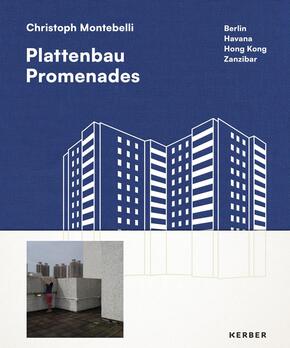Christoph Montebelli - Plattenbau Promenades. Berlin | Havana | Hong Kong | Zanzibar
| Verlag | Kerber Verlag |
| Auflage | 2024 |
| Seiten | 144 |
| Format | 21,0 x 2,0 x 24,5 cm |
| Gewicht | 755 g |
| ISBN-10 | 373560983X |
| ISBN-13 | 9783735609830 |
| Bestell-Nr | 73560983A |
Millionen Menschen leben weltweit in Plattenbauten. Die meisten dieser Gebäude entstanden in der zweiten Hälfte des 20. Jahrhunderts, und sie waren stets mit großen Ambitionen verknüpft. Die Wohnungsnot sollte gelindert und das alltägliche Leben vereinfacht werden. Doch oft entpuppten sich die geplanten Städte der Zukunft als Sinnbilder gescheiterter Utopien. Die erhoffte soziale Durchmischung blieb weitgehend aus, und die Bewohner_innen fühlen sich nicht selten marginalisiert. Christoph Montebelli (_ 1980) hat vier Plattenbausiedlungen auf vier Erdteilen - in Berlin, Hongkong, Havanna und Sansibar - aufgesucht und befragt sie in seinen Fotografien auf das Verhältnis von Anspruch und Realität. Ohne Simplifizierung und Vorurteil vermittelt Plattenbau Promenades ein emphatisches Bild dieser architektonischen Enfants terribles und verdeutlicht das lebendige Zusammenwirken von lokalen Gegebenheiten, ästhetisch-baulichen Visionen und den Menschen, die darin wohnen.
Millions of people around the globe live in Plattenbau structures. The majority of these were constructed in the second half of the twentieth century and always went hand in hand with lofty ambitions. They were intended to alleviate the housing shortage and to make daily life simpler. Often, however, the planned cities of the future came to symbolize failed utopias. The hoped-for social mixing largely failed to materialize and residents often felt marginalized. Christoph Montebelli (b. 1980) visited four Plattenbau housing estates on four continents-in Berlin, Hong Kong, Havana, and Zanzibar-and through his photographs explores the relationship between aspiration and reality. Free from oversimplification or prejudice, Plattenbau Promenades conveys powerful insight into these architectural enfants terribles and illustrates the dynamic interaction between local features, visions of an architectural aesthetic, and the people who live there.










